-
EXECUTIVE
-
SUMMARY
-
Market Overview
-
Key Findings
-
Market Segmentation
-
Competitive Landscape
-
Challenges and Opportunities
-
1.6.
-
Future Outlook
-
MARKET INTRODUCTION
-
Definition
-
Scope of the study
- Research Objective
- Assumption
- Limitations
-
RESEARCH METHODOLOGY
-
Overview
-
3.2.
-
Data Mining
-
Secondary Research
-
Primary Research
- Breakdown of Primary
-
3.4.1.
-
Primary Interviews and Information Gathering Process
-
Respondents
-
Forecasting Model
-
Market Size Estimation
- Top-Down Approach
-
3.6.1.
-
Bottom-Up Approach
-
Data Triangulation
-
Validation
-
MARKET DYNAMICS
-
Overview
-
Drivers
-
Restraints
-
Opportunities
-
MARKET
-
FACTOR ANALYSIS
-
Value chain Analysis
-
Porter's Five Forces
- Bargaining Power of Suppliers
- Bargaining Power
- Threat of New Entrants
- Threat of Substitutes
- Intensity of Rivalry
-
Analysis
-
of Buyers
-
COVID-19 Impact Analysis
- Regional Impact
- Opportunity and
-
5.3.1.
-
Market Impact Analysis
-
Threat Analysis
-
Hybrid Integration Platform Market, BY
-
Deployment Type (USD Billion)
-
On-Premises
-
Cloud-Based
-
Hybrid
-
Hybrid Integration Platform Market, BY Integration Type (USD
-
Billion)
-
Application Integration
-
Data Integration
-
7.3.
-
Process Integration
-
Hybrid Integration Platform Market, BY End User Industry
-
(USD Billion)
-
IT and Telecommunications
-
BFSI
-
Healthcare
-
Retail
-
Manufacturing
-
Hybrid Integration Platform
-
Market, BY Service Model (USD Billion)
-
Integration Platform as a Service
-
Managed Integration Services
-
Professional Services
-
10.
-
Hybrid Integration Platform Market, BY Regional (USD Billion)
-
North
- US
- Canada
-
America
-
Europe
- Germany
- UK
- France
- Russia
- Italy
- Spain
- Rest of Europe
-
APAC
- China
- India
- Japan
- South Korea
- Thailand
- Indonesia
- Rest of APAC
-
10.3.5.
-
Malaysia
-
South America
- Brazil
- Mexico
- Rest of South America
-
10.4.3.
-
Argentina
-
MEA
- GCC
- South Africa
- Rest of MEA
-
Countries
-
Competitive Landscape
-
Overview
-
Competitive Analysis
-
Market share Analysis
-
Major Growth Strategy in the Hybrid
-
Integration Platform Market
-
Competitive Benchmarking
-
Leading
-
Players in Terms of Number of Developments in the Hybrid Integration Platform Market
-
Key developments and growth strategies
- New Product Launch/Service
- Merger & Acquisitions
- Joint Ventures
-
Deployment
-
Major Players Financial Matrix
- Sales and Operating Income
- Major Players R&D Expenditure. 2023
-
Company Profiles
-
Informatica
- Financial Overview
- Products
- Key Developments
- SWOT Analysis
-
Offered
-
12.1.5.
-
Key Strategies
-
Apache
- Financial Overview
- Key Developments
- SWOT Analysis
- Key Strategies
-
12.2.2.
-
Products Offered
-
Google Cloud
- Financial Overview
- Products Offered
- Key Developments
- SWOT
- Key Strategies
-
Analysis
-
SAP
- Financial Overview
- Products Offered
- Key Developments
- SWOT
- Key Strategies
-
Analysis
-
IBM
- Financial Overview
- Products Offered
- Key Developments
- SWOT
- Key Strategies
-
Analysis
-
Oracle
- Financial
- Products Offered
- Key Developments
- Key Strategies
-
Overview
-
12.6.4.
-
SWOT Analysis
-
SnapLogic
- Financial
- Products Offered
- Key Developments
- Key Strategies
-
Overview
-
12.7.4.
-
SWOT Analysis
-
Red Hat
- Financial
- Products Offered
- Key Developments
- Key Strategies
-
Overview
-
12.8.4.
-
SWOT Analysis
-
Software AG
- Products Offered
- Key Developments
- SWOT Analysis
- Key Strategies
-
12.9.1.
-
Financial Overview
-
Microsoft
- Financial Overview
- Products Offered
- SWOT Analysis
- Key Strategies
-
12.10.3.
-
Key Developments
-
TIBCO Software
- Financial Overview
- Products
- Key Developments
- SWOT Analysis
-
Offered
-
12.11.5.
-
Key Strategies
-
MuleSoft
- Financial Overview
- Key Developments
- SWOT Analysis
- Key Strategies
-
12.12.2.
-
Products Offered
-
Dell Boomi
- Financial Overview
- Products Offered
- Key Developments
- SWOT
- Key Strategies
-
Analysis
-
Workato
- Financial
- Products Offered
- Key Developments
- Key Strategies
-
Overview
-
12.14.4.
-
SWOT Analysis
-
AWS
- Financial
- Products Offered
- Key Developments
- Key Strategies
-
Overview
-
12.15.4.
-
SWOT Analysis
-
Appendix
-
References
-
Related Reports
-
LIST Of tables
-
LIST OF ASSUMPTIONS
-
North America Hybrid Integration Platform Market SIZE ESTIMATES &
-
FORECAST, BY DEPLOYMENT TYPE, 2019-2032 (USD Billions)
-
North America
-
Hybrid Integration Platform Market SIZE ESTIMATES & FORECAST, BY INTEGRATION
-
TYPE, 2019-2032 (USD Billions)
-
North America Hybrid Integration Platform
-
Market SIZE ESTIMATES & FORECAST, BY END USER INDUSTRY, 2019-2032 (USD Billions)
-
North America Hybrid Integration Platform Market SIZE ESTIMATES &
-
FORECAST, BY SERVICE MODEL, 2019-2032 (USD Billions)
-
North America
-
Hybrid Integration Platform Market SIZE ESTIMATES & FORECAST, BY REGIONAL, 2019-2032
-
(USD Billions)
-
US Hybrid Integration Platform Market SIZE ESTIMATES
-
& FORECAST, BY DEPLOYMENT TYPE, 2019-2032 (USD Billions)
-
US Hybrid
-
Integration Platform Market SIZE ESTIMATES & FORECAST, BY INTEGRATION TYPE,
-
US Hybrid Integration Platform Market SIZE
-
ESTIMATES & FORECAST, BY END USER INDUSTRY, 2019-2032 (USD Billions)
-
Table
-
US Hybrid Integration Platform Market SIZE ESTIMATES & FORECAST, BY SERVICE
-
MODEL, 2019-2032 (USD Billions)
-
US Hybrid Integration Platform Market
-
SIZE ESTIMATES & FORECAST, BY REGIONAL, 2019-2032 (USD Billions)
-
Table
-
Canada Hybrid Integration Platform Market SIZE ESTIMATES & FORECAST, BY
-
DEPLOYMENT TYPE, 2019-2032 (USD Billions)
-
Canada Hybrid Integration
-
Platform Market SIZE ESTIMATES & FORECAST, BY INTEGRATION TYPE, 2019-2032 (USD
-
Billions)
-
Canada Hybrid Integration Platform Market SIZE ESTIMATES
-
& FORECAST, BY END USER INDUSTRY, 2019-2032 (USD Billions)
-
Canada
-
Hybrid Integration Platform Market SIZE ESTIMATES & FORECAST, BY SERVICE MODEL,
-
Canada Hybrid Integration Platform Market
-
SIZE ESTIMATES & FORECAST, BY REGIONAL, 2019-2032 (USD Billions)
-
Table
-
Europe Hybrid Integration Platform Market SIZE ESTIMATES & FORECAST, BY
-
DEPLOYMENT TYPE, 2019-2032 (USD Billions)
-
Europe Hybrid Integration
-
Platform Market SIZE ESTIMATES & FORECAST, BY INTEGRATION TYPE, 2019-2032 (USD
-
Billions)
-
Europe Hybrid Integration Platform Market SIZE ESTIMATES
-
& FORECAST, BY END USER INDUSTRY, 2019-2032 (USD Billions)
-
Europe
-
Hybrid Integration Platform Market SIZE ESTIMATES & FORECAST, BY SERVICE MODEL,
-
Europe Hybrid Integration Platform Market
-
SIZE ESTIMATES & FORECAST, BY REGIONAL, 2019-2032 (USD Billions)
-
Table
-
Germany Hybrid Integration Platform Market SIZE ESTIMATES & FORECAST, BY
-
DEPLOYMENT TYPE, 2019-2032 (USD Billions)
-
Germany Hybrid Integration
-
Platform Market SIZE ESTIMATES & FORECAST, BY INTEGRATION TYPE, 2019-2032 (USD
-
Billions)
-
Germany Hybrid Integration Platform Market SIZE ESTIMATES
-
& FORECAST, BY END USER INDUSTRY, 2019-2032 (USD Billions)
-
Germany
-
Hybrid Integration Platform Market SIZE ESTIMATES & FORECAST, BY SERVICE MODEL,
-
Germany Hybrid Integration Platform Market
-
SIZE ESTIMATES & FORECAST, BY REGIONAL, 2019-2032 (USD Billions)
-
Table
-
UK Hybrid Integration Platform Market SIZE ESTIMATES & FORECAST, BY DEPLOYMENT
-
TYPE, 2019-2032 (USD Billions)
-
UK Hybrid Integration Platform Market
-
SIZE ESTIMATES & FORECAST, BY INTEGRATION TYPE, 2019-2032 (USD Billions)
-
UK Hybrid Integration Platform Market SIZE ESTIMATES & FORECAST,
-
BY END USER INDUSTRY, 2019-2032 (USD Billions)
-
UK Hybrid Integration
-
Platform Market SIZE ESTIMATES & FORECAST, BY SERVICE MODEL, 2019-2032 (USD
-
Billions)
-
UK Hybrid Integration Platform Market SIZE ESTIMATES &
-
FORECAST, BY REGIONAL, 2019-2032 (USD Billions)
-
France Hybrid Integration
-
Platform Market SIZE ESTIMATES & FORECAST, BY DEPLOYMENT TYPE, 2019-2032 (USD
-
Billions)
-
France Hybrid Integration Platform Market SIZE ESTIMATES
-
& FORECAST, BY INTEGRATION TYPE, 2019-2032 (USD Billions)
-
France
-
Hybrid Integration Platform Market SIZE ESTIMATES & FORECAST, BY END USER INDUSTRY,
-
France Hybrid Integration Platform Market
-
SIZE ESTIMATES & FORECAST, BY SERVICE MODEL, 2019-2032 (USD Billions)
-
Table
-
France Hybrid Integration Platform Market SIZE ESTIMATES & FORECAST, BY
-
REGIONAL, 2019-2032 (USD Billions)
-
Russia Hybrid Integration Platform
-
Market SIZE ESTIMATES & FORECAST, BY DEPLOYMENT TYPE, 2019-2032 (USD Billions)
-
Russia Hybrid Integration Platform Market SIZE ESTIMATES & FORECAST,
-
BY INTEGRATION TYPE, 2019-2032 (USD Billions)
-
Russia Hybrid Integration
-
Platform Market SIZE ESTIMATES & FORECAST, BY END USER INDUSTRY, 2019-2032 (USD
-
Billions)
-
Russia Hybrid Integration Platform Market SIZE ESTIMATES
-
& FORECAST, BY SERVICE MODEL, 2019-2032 (USD Billions)
-
Russia
-
Hybrid Integration Platform Market SIZE ESTIMATES & FORECAST, BY REGIONAL, 2019-2032
-
(USD Billions)
-
Italy Hybrid Integration Platform Market SIZE ESTIMATES
-
& FORECAST, BY DEPLOYMENT TYPE, 2019-2032 (USD Billions)
-
Italy
-
Hybrid Integration Platform Market SIZE ESTIMATES & FORECAST, BY INTEGRATION
-
TYPE, 2019-2032 (USD Billions)
-
Italy Hybrid Integration Platform
-
Market SIZE ESTIMATES & FORECAST, BY END USER INDUSTRY, 2019-2032 (USD Billions)
-
Italy Hybrid Integration Platform Market SIZE ESTIMATES & FORECAST,
-
BY SERVICE MODEL, 2019-2032 (USD Billions)
-
Italy Hybrid Integration
-
Platform Market SIZE ESTIMATES & FORECAST, BY REGIONAL, 2019-2032 (USD Billions)
-
Spain Hybrid Integration Platform Market SIZE ESTIMATES & FORECAST,
-
BY DEPLOYMENT TYPE, 2019-2032 (USD Billions)
-
Spain Hybrid Integration
-
Platform Market SIZE ESTIMATES & FORECAST, BY INTEGRATION TYPE, 2019-2032 (USD
-
Billions)
-
Spain Hybrid Integration Platform Market SIZE ESTIMATES
-
& FORECAST, BY END USER INDUSTRY, 2019-2032 (USD Billions)
-
Spain
-
Hybrid Integration Platform Market SIZE ESTIMATES & FORECAST, BY SERVICE MODEL,
-
Spain Hybrid Integration Platform Market
-
SIZE ESTIMATES & FORECAST, BY REGIONAL, 2019-2032 (USD Billions)
-
Table
-
Rest of Europe Hybrid Integration Platform Market SIZE ESTIMATES & FORECAST,
-
BY DEPLOYMENT TYPE, 2019-2032 (USD Billions)
-
Rest of Europe Hybrid
-
Integration Platform Market SIZE ESTIMATES & FORECAST, BY INTEGRATION TYPE,
-
Rest of Europe Hybrid Integration Platform
-
Market SIZE ESTIMATES & FORECAST, BY END USER INDUSTRY, 2019-2032 (USD Billions)
-
Rest of Europe Hybrid Integration Platform Market SIZE ESTIMATES
-
& FORECAST, BY SERVICE MODEL, 2019-2032 (USD Billions)
-
Rest
-
of Europe Hybrid Integration Platform Market SIZE ESTIMATES & FORECAST, BY REGIONAL,
-
APAC Hybrid Integration Platform Market
-
SIZE ESTIMATES & FORECAST, BY DEPLOYMENT TYPE, 2019-2032 (USD Billions)
-
APAC Hybrid Integration Platform Market SIZE ESTIMATES & FORECAST,
-
BY INTEGRATION TYPE, 2019-2032 (USD Billions)
-
APAC Hybrid Integration
-
Platform Market SIZE ESTIMATES & FORECAST, BY END USER INDUSTRY, 2019-2032 (USD
-
Billions)
-
APAC Hybrid Integration Platform Market SIZE ESTIMATES
-
& FORECAST, BY SERVICE MODEL, 2019-2032 (USD Billions)
-
APAC
-
Hybrid Integration Platform Market SIZE ESTIMATES & FORECAST, BY REGIONAL, 2019-2032
-
(USD Billions)
-
China Hybrid Integration Platform Market SIZE ESTIMATES
-
& FORECAST, BY DEPLOYMENT TYPE, 2019-2032 (USD Billions)
-
China
-
Hybrid Integration Platform Market SIZE ESTIMATES & FORECAST, BY INTEGRATION
-
TYPE, 2019-2032 (USD Billions)
-
China Hybrid Integration Platform
-
Market SIZE ESTIMATES & FORECAST, BY END USER INDUSTRY, 2019-2032 (USD Billions)
-
China Hybrid Integration Platform Market SIZE ESTIMATES & FORECAST,
-
BY SERVICE MODEL, 2019-2032 (USD Billions)
-
China Hybrid Integration
-
Platform Market SIZE ESTIMATES & FORECAST, BY REGIONAL, 2019-2032 (USD Billions)
-
India Hybrid Integration Platform Market SIZE ESTIMATES & FORECAST,
-
BY DEPLOYMENT TYPE, 2019-2032 (USD Billions)
-
India Hybrid Integration
-
Platform Market SIZE ESTIMATES & FORECAST, BY INTEGRATION TYPE, 2019-2032 (USD
-
Billions)
-
India Hybrid Integration Platform Market SIZE ESTIMATES
-
& FORECAST, BY END USER INDUSTRY, 2019-2032 (USD Billions)
-
India
-
Hybrid Integration Platform Market SIZE ESTIMATES & FORECAST, BY SERVICE MODEL,
-
India Hybrid Integration Platform Market
-
SIZE ESTIMATES & FORECAST, BY REGIONAL, 2019-2032 (USD Billions)
-
Table
-
Japan Hybrid Integration Platform Market SIZE ESTIMATES & FORECAST, BY DEPLOYMENT
-
TYPE, 2019-2032 (USD Billions)
-
Japan Hybrid Integration Platform
-
Market SIZE ESTIMATES & FORECAST, BY INTEGRATION TYPE, 2019-2032 (USD Billions)
-
Japan Hybrid Integration Platform Market SIZE ESTIMATES & FORECAST,
-
BY END USER INDUSTRY, 2019-2032 (USD Billions)
-
Japan Hybrid Integration
-
Platform Market SIZE ESTIMATES & FORECAST, BY SERVICE MODEL, 2019-2032 (USD
-
Billions)
-
Japan Hybrid Integration Platform Market SIZE ESTIMATES
-
& FORECAST, BY REGIONAL, 2019-2032 (USD Billions)
-
South Korea
-
Hybrid Integration Platform Market SIZE ESTIMATES & FORECAST, BY DEPLOYMENT
-
TYPE, 2019-2032 (USD Billions)
-
South Korea Hybrid Integration Platform
-
Market SIZE ESTIMATES & FORECAST, BY INTEGRATION TYPE, 2019-2032 (USD Billions)
-
South Korea Hybrid Integration Platform Market SIZE ESTIMATES &
-
FORECAST, BY END USER INDUSTRY, 2019-2032 (USD Billions)
-
South Korea
-
Hybrid Integration Platform Market SIZE ESTIMATES & FORECAST, BY SERVICE MODEL,
-
South Korea Hybrid Integration Platform
-
Market SIZE ESTIMATES & FORECAST, BY REGIONAL, 2019-2032 (USD Billions)
-
Malaysia Hybrid Integration Platform Market SIZE ESTIMATES & FORECAST,
-
BY DEPLOYMENT TYPE, 2019-2032 (USD Billions)
-
Malaysia Hybrid Integration
-
Platform Market SIZE ESTIMATES & FORECAST, BY INTEGRATION TYPE, 2019-2032 (USD
-
Billions)
-
Malaysia Hybrid Integration Platform Market SIZE ESTIMATES
-
& FORECAST, BY END USER INDUSTRY, 2019-2032 (USD Billions)
-
Malaysia
-
Hybrid Integration Platform Market SIZE ESTIMATES & FORECAST, BY SERVICE MODEL,
-
Malaysia Hybrid Integration Platform Market
-
SIZE ESTIMATES & FORECAST, BY REGIONAL, 2019-2032 (USD Billions)
-
Table
-
Thailand Hybrid Integration Platform Market SIZE ESTIMATES & FORECAST, BY
-
DEPLOYMENT TYPE, 2019-2032 (USD Billions)
-
Thailand Hybrid Integration
-
Platform Market SIZE ESTIMATES & FORECAST, BY INTEGRATION TYPE, 2019-2032 (USD
-
Billions)
-
Thailand Hybrid Integration Platform Market SIZE ESTIMATES
-
& FORECAST, BY END USER INDUSTRY, 2019-2032 (USD Billions)
-
Thailand
-
Hybrid Integration Platform Market SIZE ESTIMATES & FORECAST, BY SERVICE MODEL,
-
Thailand Hybrid Integration Platform Market
-
SIZE ESTIMATES & FORECAST, BY REGIONAL, 2019-2032 (USD Billions)
-
Table
-
Indonesia Hybrid Integration Platform Market SIZE ESTIMATES & FORECAST,
-
BY DEPLOYMENT TYPE, 2019-2032 (USD Billions)
-
Indonesia Hybrid Integration
-
Platform Market SIZE ESTIMATES & FORECAST, BY INTEGRATION TYPE, 2019-2032 (USD
-
Billions)
-
Indonesia Hybrid Integration Platform Market SIZE ESTIMATES
-
& FORECAST, BY END USER INDUSTRY, 2019-2032 (USD Billions)
-
Indonesia
-
Hybrid Integration Platform Market SIZE ESTIMATES & FORECAST, BY SERVICE MODEL,
-
Indonesia Hybrid Integration Platform Market
-
SIZE ESTIMATES & FORECAST, BY REGIONAL, 2019-2032 (USD Billions)
-
Table
-
Rest of APAC Hybrid Integration Platform Market SIZE ESTIMATES & FORECAST,
-
BY DEPLOYMENT TYPE, 2019-2032 (USD Billions)
-
Rest of APAC Hybrid
-
Integration Platform Market SIZE ESTIMATES & FORECAST, BY INTEGRATION TYPE,
-
Rest of APAC Hybrid Integration Platform
-
Market SIZE ESTIMATES & FORECAST, BY END USER INDUSTRY, 2019-2032 (USD Billions)
-
Rest of APAC Hybrid Integration Platform Market SIZE ESTIMATES
-
& FORECAST, BY SERVICE MODEL, 2019-2032 (USD Billions)
-
Rest
-
of APAC Hybrid Integration Platform Market SIZE ESTIMATES & FORECAST, BY REGIONAL,
-
South America Hybrid Integration Platform
-
Market SIZE ESTIMATES & FORECAST, BY DEPLOYMENT TYPE, 2019-2032 (USD Billions)
-
South America Hybrid Integration Platform Market SIZE ESTIMATES
-
& FORECAST, BY INTEGRATION TYPE, 2019-2032 (USD Billions)
-
South
-
America Hybrid Integration Platform Market SIZE ESTIMATES & FORECAST, BY END
-
USER INDUSTRY, 2019-2032 (USD Billions)
-
South America Hybrid Integration
-
Platform Market SIZE ESTIMATES & FORECAST, BY SERVICE MODEL, 2019-2032 (USD
-
Billions)
-
South America Hybrid Integration Platform Market SIZE
-
ESTIMATES & FORECAST, BY REGIONAL, 2019-2032 (USD Billions)
-
Table 107.
-
Brazil Hybrid Integration Platform Market SIZE ESTIMATES & FORECAST, BY DEPLOYMENT
-
TYPE, 2019-2032 (USD Billions)
-
Brazil Hybrid Integration Platform
-
Market SIZE ESTIMATES & FORECAST, BY INTEGRATION TYPE, 2019-2032 (USD Billions)
-
Brazil Hybrid Integration Platform Market SIZE ESTIMATES &
-
FORECAST, BY END USER INDUSTRY, 2019-2032 (USD Billions)
-
Brazil
-
Hybrid Integration Platform Market SIZE ESTIMATES & FORECAST, BY SERVICE MODEL,
-
Brazil Hybrid Integration Platform Market
-
SIZE ESTIMATES & FORECAST, BY REGIONAL, 2019-2032 (USD Billions)
-
Table
-
Mexico Hybrid Integration Platform Market SIZE ESTIMATES & FORECAST, BY
-
DEPLOYMENT TYPE, 2019-2032 (USD Billions)
-
Mexico Hybrid Integration
-
Platform Market SIZE ESTIMATES & FORECAST, BY INTEGRATION TYPE, 2019-2032 (USD
-
Billions)
-
Mexico Hybrid Integration Platform Market SIZE ESTIMATES
-
& FORECAST, BY END USER INDUSTRY, 2019-2032 (USD Billions)
-
Table 115.
-
Mexico Hybrid Integration Platform Market SIZE ESTIMATES & FORECAST, BY SERVICE
-
MODEL, 2019-2032 (USD Billions)
-
Mexico Hybrid Integration Platform
-
Market SIZE ESTIMATES & FORECAST, BY REGIONAL, 2019-2032 (USD Billions)
-
Argentina Hybrid Integration Platform Market SIZE ESTIMATES & FORECAST,
-
BY DEPLOYMENT TYPE, 2019-2032 (USD Billions)
-
Argentina Hybrid Integration
-
Platform Market SIZE ESTIMATES & FORECAST, BY INTEGRATION TYPE, 2019-2032 (USD
-
Billions)
-
Argentina Hybrid Integration Platform Market SIZE ESTIMATES
-
& FORECAST, BY END USER INDUSTRY, 2019-2032 (USD Billions)
-
Table 120.
-
Argentina Hybrid Integration Platform Market SIZE ESTIMATES & FORECAST, BY SERVICE
-
MODEL, 2019-2032 (USD Billions)
-
Argentina Hybrid Integration Platform
-
Market SIZE ESTIMATES & FORECAST, BY REGIONAL, 2019-2032 (USD Billions)
-
Rest of South America Hybrid Integration Platform Market SIZE ESTIMATES
-
& FORECAST, BY DEPLOYMENT TYPE, 2019-2032 (USD Billions)
-
Rest
-
of South America Hybrid Integration Platform Market SIZE ESTIMATES & FORECAST,
-
BY INTEGRATION TYPE, 2019-2032 (USD Billions)
-
Rest of South America
-
Hybrid Integration Platform Market SIZE ESTIMATES & FORECAST, BY END USER INDUSTRY,
-
Rest of South America Hybrid Integration
-
Platform Market SIZE ESTIMATES & FORECAST, BY SERVICE MODEL, 2019-2032 (USD
-
Billions)
-
Rest of South America Hybrid Integration Platform Market
-
SIZE ESTIMATES & FORECAST, BY REGIONAL, 2019-2032 (USD Billions)
-
Table
-
MEA Hybrid Integration Platform Market SIZE ESTIMATES & FORECAST, BY DEPLOYMENT
-
TYPE, 2019-2032 (USD Billions)
-
MEA Hybrid Integration Platform
-
Market SIZE ESTIMATES & FORECAST, BY INTEGRATION TYPE, 2019-2032 (USD Billions)
-
MEA Hybrid Integration Platform Market SIZE ESTIMATES & FORECAST,
-
BY END USER INDUSTRY, 2019-2032 (USD Billions)
-
MEA Hybrid Integration
-
Platform Market SIZE ESTIMATES & FORECAST, BY SERVICE MODEL, 2019-2032 (USD
-
Billions)
-
MEA Hybrid Integration Platform Market SIZE ESTIMATES
-
& FORECAST, BY REGIONAL, 2019-2032 (USD Billions)
-
GCC Countries
-
Hybrid Integration Platform Market SIZE ESTIMATES & FORECAST, BY DEPLOYMENT
-
TYPE, 2019-2032 (USD Billions)
-
GCC Countries Hybrid Integration
-
Platform Market SIZE ESTIMATES & FORECAST, BY INTEGRATION TYPE, 2019-2032 (USD
-
Billions)
-
GCC Countries Hybrid Integration Platform Market SIZE
-
ESTIMATES & FORECAST, BY END USER INDUSTRY, 2019-2032 (USD Billions)
-
Table
-
GCC Countries Hybrid Integration Platform Market SIZE ESTIMATES & FORECAST,
-
BY SERVICE MODEL, 2019-2032 (USD Billions)
-
GCC Countries Hybrid
-
Integration Platform Market SIZE ESTIMATES & FORECAST, BY REGIONAL, 2019-2032
-
(USD Billions)
-
South Africa Hybrid Integration Platform Market
-
SIZE ESTIMATES & FORECAST, BY DEPLOYMENT TYPE, 2019-2032 (USD Billions)
-
South Africa Hybrid Integration Platform Market SIZE ESTIMATES &
-
FORECAST, BY INTEGRATION TYPE, 2019-2032 (USD Billions)
-
South Africa
-
Hybrid Integration Platform Market SIZE ESTIMATES & FORECAST, BY END USER INDUSTRY,
-
South Africa Hybrid Integration Platform
-
Market SIZE ESTIMATES & FORECAST, BY SERVICE MODEL, 2019-2032 (USD Billions)
-
South Africa Hybrid Integration Platform Market SIZE ESTIMATES
-
& FORECAST, BY REGIONAL, 2019-2032 (USD Billions)
-
Rest of MEA
-
Hybrid Integration Platform Market SIZE ESTIMATES & FORECAST, BY DEPLOYMENT
-
TYPE, 2019-2032 (USD Billions)
-
Rest of MEA Hybrid Integration Platform
-
Market SIZE ESTIMATES & FORECAST, BY INTEGRATION TYPE, 2019-2032 (USD Billions)
-
Rest of MEA Hybrid Integration Platform Market SIZE ESTIMATES &
-
FORECAST, BY END USER INDUSTRY, 2019-2032 (USD Billions)
-
Rest of
-
MEA Hybrid Integration Platform Market SIZE ESTIMATES & FORECAST, BY SERVICE
-
MODEL, 2019-2032 (USD Billions)
-
Rest of MEA Hybrid Integration
-
Platform Market SIZE ESTIMATES & FORECAST, BY REGIONAL, 2019-2032 (USD Billions)
-
PRODUCT LAUNCH/PRODUCT DEVELOPMENT/APPROVAL
-
ACQUISITION/PARTNERSHIP
-
LIST Of figures
-
MARKET SYNOPSIS
-
Figure
-
NORTH AMERICA HYBRID INTEGRATION PLATFORM MARKET ANALYSIS
-
US
-
HYBRID INTEGRATION PLATFORM MARKET ANALYSIS BY DEPLOYMENT TYPE
-
US
-
HYBRID INTEGRATION PLATFORM MARKET ANALYSIS BY INTEGRATION TYPE
-
Figure 5.
-
US HYBRID INTEGRATION PLATFORM MARKET ANALYSIS BY END USER INDUSTRY
-
Figure
-
US HYBRID INTEGRATION PLATFORM MARKET ANALYSIS BY SERVICE MODEL
-
Figure
-
US HYBRID INTEGRATION PLATFORM MARKET ANALYSIS BY REGIONAL
-
CANADA
-
HYBRID INTEGRATION PLATFORM MARKET ANALYSIS BY DEPLOYMENT TYPE
-
CANADA
-
HYBRID INTEGRATION PLATFORM MARKET ANALYSIS BY INTEGRATION TYPE
-
Figure 10.
-
CANADA HYBRID INTEGRATION PLATFORM MARKET ANALYSIS BY END USER INDUSTRY
-
Figure
-
CANADA HYBRID INTEGRATION PLATFORM MARKET ANALYSIS BY SERVICE MODEL
-
Figure
-
CANADA HYBRID INTEGRATION PLATFORM MARKET ANALYSIS BY REGIONAL
-
Figure
-
EUROPE HYBRID INTEGRATION PLATFORM MARKET ANALYSIS
-
GERMANY
-
HYBRID INTEGRATION PLATFORM MARKET ANALYSIS BY DEPLOYMENT TYPE
-
Figure 15.
-
GERMANY HYBRID INTEGRATION PLATFORM MARKET ANALYSIS BY INTEGRATION TYPE
-
Figure
-
GERMANY HYBRID INTEGRATION PLATFORM MARKET ANALYSIS BY END USER INDUSTRY
-
GERMANY HYBRID INTEGRATION PLATFORM MARKET ANALYSIS BY SERVICE MODEL
-
GERMANY HYBRID INTEGRATION PLATFORM MARKET ANALYSIS BY REGIONAL
-
UK HYBRID INTEGRATION PLATFORM MARKET ANALYSIS BY DEPLOYMENT TYPE
-
UK HYBRID INTEGRATION PLATFORM MARKET ANALYSIS BY INTEGRATION TYPE
-
UK HYBRID INTEGRATION PLATFORM MARKET ANALYSIS BY END USER INDUSTRY
-
UK HYBRID INTEGRATION PLATFORM MARKET ANALYSIS BY SERVICE MODEL
-
UK HYBRID INTEGRATION PLATFORM MARKET ANALYSIS BY REGIONAL
-
FRANCE HYBRID INTEGRATION PLATFORM MARKET ANALYSIS BY DEPLOYMENT TYPE
-
FRANCE HYBRID INTEGRATION PLATFORM MARKET ANALYSIS BY INTEGRATION
-
TYPE
-
FRANCE HYBRID INTEGRATION PLATFORM MARKET ANALYSIS BY END
-
USER INDUSTRY
-
FRANCE HYBRID INTEGRATION PLATFORM MARKET ANALYSIS
-
BY SERVICE MODEL
-
FRANCE HYBRID INTEGRATION PLATFORM MARKET ANALYSIS
-
BY REGIONAL
-
RUSSIA HYBRID INTEGRATION PLATFORM MARKET ANALYSIS
-
BY DEPLOYMENT TYPE
-
RUSSIA HYBRID INTEGRATION PLATFORM MARKET ANALYSIS
-
BY INTEGRATION TYPE
-
RUSSIA HYBRID INTEGRATION PLATFORM MARKET ANALYSIS
-
BY END USER INDUSTRY
-
RUSSIA HYBRID INTEGRATION PLATFORM MARKET
-
ANALYSIS BY SERVICE MODEL
-
RUSSIA HYBRID INTEGRATION PLATFORM MARKET
-
ANALYSIS BY REGIONAL
-
ITALY HYBRID INTEGRATION PLATFORM MARKET ANALYSIS
-
BY DEPLOYMENT TYPE
-
ITALY HYBRID INTEGRATION PLATFORM MARKET ANALYSIS
-
BY INTEGRATION TYPE
-
ITALY HYBRID INTEGRATION PLATFORM MARKET ANALYSIS
-
BY END USER INDUSTRY
-
ITALY HYBRID INTEGRATION PLATFORM MARKET ANALYSIS
-
BY SERVICE MODEL
-
ITALY HYBRID INTEGRATION PLATFORM MARKET ANALYSIS
-
BY REGIONAL
-
SPAIN HYBRID INTEGRATION PLATFORM MARKET ANALYSIS BY
-
DEPLOYMENT TYPE
-
SPAIN HYBRID INTEGRATION PLATFORM MARKET ANALYSIS
-
BY INTEGRATION TYPE
-
SPAIN HYBRID INTEGRATION PLATFORM MARKET ANALYSIS
-
BY END USER INDUSTRY
-
SPAIN HYBRID INTEGRATION PLATFORM MARKET ANALYSIS
-
BY SERVICE MODEL
-
SPAIN HYBRID INTEGRATION PLATFORM MARKET ANALYSIS
-
BY REGIONAL
-
REST OF EUROPE HYBRID INTEGRATION PLATFORM MARKET ANALYSIS
-
BY DEPLOYMENT TYPE
-
REST OF EUROPE HYBRID INTEGRATION PLATFORM MARKET
-
ANALYSIS BY INTEGRATION TYPE
-
REST OF EUROPE HYBRID INTEGRATION
-
PLATFORM MARKET ANALYSIS BY END USER INDUSTRY
-
REST OF EUROPE HYBRID
-
INTEGRATION PLATFORM MARKET ANALYSIS BY SERVICE MODEL
-
REST OF EUROPE
-
HYBRID INTEGRATION PLATFORM MARKET ANALYSIS BY REGIONAL
-
APAC HYBRID
-
INTEGRATION PLATFORM MARKET ANALYSIS
-
CHINA HYBRID INTEGRATION PLATFORM
-
MARKET ANALYSIS BY DEPLOYMENT TYPE
-
CHINA HYBRID INTEGRATION PLATFORM
-
MARKET ANALYSIS BY INTEGRATION TYPE
-
CHINA HYBRID INTEGRATION PLATFORM
-
MARKET ANALYSIS BY END USER INDUSTRY
-
CHINA HYBRID INTEGRATION PLATFORM
-
MARKET ANALYSIS BY SERVICE MODEL
-
CHINA HYBRID INTEGRATION PLATFORM
-
MARKET ANALYSIS BY REGIONAL
-
INDIA HYBRID INTEGRATION PLATFORM MARKET
-
ANALYSIS BY DEPLOYMENT TYPE
-
INDIA HYBRID INTEGRATION PLATFORM MARKET
-
ANALYSIS BY INTEGRATION TYPE
-
INDIA HYBRID INTEGRATION PLATFORM
-
MARKET ANALYSIS BY END USER INDUSTRY
-
INDIA HYBRID INTEGRATION PLATFORM
-
MARKET ANALYSIS BY SERVICE MODEL
-
INDIA HYBRID INTEGRATION PLATFORM
-
MARKET ANALYSIS BY REGIONAL
-
JAPAN HYBRID INTEGRATION PLATFORM MARKET
-
ANALYSIS BY DEPLOYMENT TYPE
-
JAPAN HYBRID INTEGRATION PLATFORM MARKET
-
ANALYSIS BY INTEGRATION TYPE
-
JAPAN HYBRID INTEGRATION PLATFORM
-
MARKET ANALYSIS BY END USER INDUSTRY
-
JAPAN HYBRID INTEGRATION PLATFORM
-
MARKET ANALYSIS BY SERVICE MODEL
-
JAPAN HYBRID INTEGRATION PLATFORM
-
MARKET ANALYSIS BY REGIONAL
-
SOUTH KOREA HYBRID INTEGRATION PLATFORM
-
MARKET ANALYSIS BY DEPLOYMENT TYPE
-
SOUTH KOREA HYBRID INTEGRATION
-
PLATFORM MARKET ANALYSIS BY INTEGRATION TYPE
-
SOUTH KOREA HYBRID
-
INTEGRATION PLATFORM MARKET ANALYSIS BY END USER INDUSTRY
-
SOUTH
-
KOREA HYBRID INTEGRATION PLATFORM MARKET ANALYSIS BY SERVICE MODEL
-
Figure
-
SOUTH KOREA HYBRID INTEGRATION PLATFORM MARKET ANALYSIS BY REGIONAL
-
Figure
-
MALAYSIA HYBRID INTEGRATION PLATFORM MARKET ANALYSIS BY DEPLOYMENT TYPE
-
MALAYSIA HYBRID INTEGRATION PLATFORM MARKET ANALYSIS BY INTEGRATION
-
TYPE
-
MALAYSIA HYBRID INTEGRATION PLATFORM MARKET ANALYSIS BY END
-
USER INDUSTRY
-
MALAYSIA HYBRID INTEGRATION PLATFORM MARKET ANALYSIS
-
BY SERVICE MODEL
-
MALAYSIA HYBRID INTEGRATION PLATFORM MARKET ANALYSIS
-
BY REGIONAL
-
THAILAND HYBRID INTEGRATION PLATFORM MARKET ANALYSIS
-
BY DEPLOYMENT TYPE
-
THAILAND HYBRID INTEGRATION PLATFORM MARKET
-
ANALYSIS BY INTEGRATION TYPE
-
THAILAND HYBRID INTEGRATION PLATFORM
-
MARKET ANALYSIS BY END USER INDUSTRY
-
THAILAND HYBRID INTEGRATION
-
PLATFORM MARKET ANALYSIS BY SERVICE MODEL
-
THAILAND HYBRID INTEGRATION
-
PLATFORM MARKET ANALYSIS BY REGIONAL
-
INDONESIA HYBRID INTEGRATION
-
PLATFORM MARKET ANALYSIS BY DEPLOYMENT TYPE
-
INDONESIA HYBRID INTEGRATION
-
PLATFORM MARKET ANALYSIS BY INTEGRATION TYPE
-
INDONESIA HYBRID INTEGRATION
-
PLATFORM MARKET ANALYSIS BY END USER INDUSTRY
-
INDONESIA HYBRID
-
INTEGRATION PLATFORM MARKET ANALYSIS BY SERVICE MODEL
-
INDONESIA
-
HYBRID INTEGRATION PLATFORM MARKET ANALYSIS BY REGIONAL
-
REST OF
-
APAC HYBRID INTEGRATION PLATFORM MARKET ANALYSIS BY DEPLOYMENT TYPE
-
Figure
-
REST OF APAC HYBRID INTEGRATION PLATFORM MARKET ANALYSIS BY INTEGRATION TYPE
-
REST OF APAC HYBRID INTEGRATION PLATFORM MARKET ANALYSIS BY END
-
USER INDUSTRY
-
REST OF APAC HYBRID INTEGRATION PLATFORM MARKET ANALYSIS
-
BY SERVICE MODEL
-
REST OF APAC HYBRID INTEGRATION PLATFORM MARKET
-
ANALYSIS BY REGIONAL
-
SOUTH AMERICA HYBRID INTEGRATION PLATFORM
-
MARKET ANALYSIS
-
BRAZIL HYBRID INTEGRATION PLATFORM MARKET ANALYSIS
-
BY DEPLOYMENT TYPE
-
BRAZIL HYBRID INTEGRATION PLATFORM MARKET ANALYSIS
-
BY INTEGRATION TYPE
-
BRAZIL HYBRID INTEGRATION PLATFORM MARKET ANALYSIS
-
BY END USER INDUSTRY
-
BRAZIL HYBRID INTEGRATION PLATFORM MARKET
-
ANALYSIS BY SERVICE MODEL
-
BRAZIL HYBRID INTEGRATION PLATFORM MARKET
-
ANALYSIS BY REGIONAL
-
MEXICO HYBRID INTEGRATION PLATFORM MARKET
-
ANALYSIS BY DEPLOYMENT TYPE
-
MEXICO HYBRID INTEGRATION PLATFORM
-
MARKET ANALYSIS BY INTEGRATION TYPE
-
MEXICO HYBRID INTEGRATION PLATFORM
-
MARKET ANALYSIS BY END USER INDUSTRY
-
MEXICO HYBRID INTEGRATION
-
PLATFORM MARKET ANALYSIS BY SERVICE MODEL
-
MEXICO HYBRID INTEGRATION
-
PLATFORM MARKET ANALYSIS BY REGIONAL
-
ARGENTINA HYBRID INTEGRATION
-
PLATFORM MARKET ANALYSIS BY DEPLOYMENT TYPE
-
ARGENTINA HYBRID INTEGRATION
-
PLATFORM MARKET ANALYSIS BY INTEGRATION TYPE
-
ARGENTINA HYBRID
-
INTEGRATION PLATFORM MARKET ANALYSIS BY END USER INDUSTRY
-
ARGENTINA
-
HYBRID INTEGRATION PLATFORM MARKET ANALYSIS BY SERVICE MODEL
-
ARGENTINA
-
HYBRID INTEGRATION PLATFORM MARKET ANALYSIS BY REGIONAL
-
REST OF
-
SOUTH AMERICA HYBRID INTEGRATION PLATFORM MARKET ANALYSIS BY DEPLOYMENT TYPE
-
REST OF SOUTH AMERICA HYBRID INTEGRATION PLATFORM MARKET ANALYSIS
-
BY INTEGRATION TYPE
-
REST OF SOUTH AMERICA HYBRID INTEGRATION PLATFORM
-
MARKET ANALYSIS BY END USER INDUSTRY
-
REST OF SOUTH AMERICA HYBRID
-
INTEGRATION PLATFORM MARKET ANALYSIS BY SERVICE MODEL
-
REST OF
-
SOUTH AMERICA HYBRID INTEGRATION PLATFORM MARKET ANALYSIS BY REGIONAL
-
Figure
-
MEA HYBRID INTEGRATION PLATFORM MARKET ANALYSIS
-
GCC COUNTRIES
-
HYBRID INTEGRATION PLATFORM MARKET ANALYSIS BY DEPLOYMENT TYPE
-
Figure 113.
-
GCC COUNTRIES HYBRID INTEGRATION PLATFORM MARKET ANALYSIS BY INTEGRATION TYPE
-
GCC COUNTRIES HYBRID INTEGRATION PLATFORM MARKET ANALYSIS BY END USER
-
INDUSTRY
-
GCC COUNTRIES HYBRID INTEGRATION PLATFORM MARKET ANALYSIS
-
BY SERVICE MODEL
-
GCC COUNTRIES HYBRID INTEGRATION PLATFORM MARKET
-
ANALYSIS BY REGIONAL
-
SOUTH AFRICA HYBRID INTEGRATION PLATFORM
-
MARKET ANALYSIS BY DEPLOYMENT TYPE
-
SOUTH AFRICA HYBRID INTEGRATION
-
PLATFORM MARKET ANALYSIS BY INTEGRATION TYPE
-
SOUTH AFRICA HYBRID
-
INTEGRATION PLATFORM MARKET ANALYSIS BY END USER INDUSTRY
-
SOUTH
-
AFRICA HYBRID INTEGRATION PLATFORM MARKET ANALYSIS BY SERVICE MODEL
-
Figure
-
SOUTH AFRICA HYBRID INTEGRATION PLATFORM MARKET ANALYSIS BY REGIONAL
-
Figure
-
REST OF MEA HYBRID INTEGRATION PLATFORM MARKET ANALYSIS BY DEPLOYMENT TYPE
-
REST OF MEA HYBRID INTEGRATION PLATFORM MARKET ANALYSIS BY INTEGRATION
-
TYPE
-
REST OF MEA HYBRID INTEGRATION PLATFORM MARKET ANALYSIS BY
-
END USER INDUSTRY
-
REST OF MEA HYBRID INTEGRATION PLATFORM MARKET
-
ANALYSIS BY SERVICE MODEL
-
REST OF MEA HYBRID INTEGRATION PLATFORM
-
MARKET ANALYSIS BY REGIONAL
-
KEY BUYING CRITERIA OF HYBRID INTEGRATION
-
PLATFORM MARKET
-
RESEARCH PROCESS OF MRFR
-
DRO
-
ANALYSIS OF HYBRID INTEGRATION PLATFORM MARKET
-
DRIVERS IMPACT
-
ANALYSIS: HYBRID INTEGRATION PLATFORM MARKET
-
RESTRAINTS IMPACT
-
ANALYSIS: HYBRID INTEGRATION PLATFORM MARKET
-
SUPPLY / VALUE CHAIN:
-
HYBRID INTEGRATION PLATFORM MARKET
-
HYBRID INTEGRATION PLATFORM
-
MARKET, BY DEPLOYMENT TYPE, 2024 (% SHARE)
-
HYBRID INTEGRATION
-
PLATFORM MARKET, BY DEPLOYMENT TYPE, 2019 TO 2032 (USD Billions)
-
Figure 135.
-
HYBRID INTEGRATION PLATFORM MARKET, BY INTEGRATION TYPE, 2024 (% SHARE)
-
Figure
-
HYBRID INTEGRATION PLATFORM MARKET, BY INTEGRATION TYPE, 2019 TO 2032 (USD
-
Billions)
-
HYBRID INTEGRATION PLATFORM MARKET, BY END USER INDUSTRY,
-
HYBRID INTEGRATION PLATFORM MARKET, BY END USER
-
INDUSTRY, 2019 TO 2032 (USD Billions)
-
HYBRID INTEGRATION PLATFORM
-
MARKET, BY SERVICE MODEL, 2024 (% SHARE)
-
HYBRID INTEGRATION PLATFORM
-
MARKET, BY SERVICE MODEL, 2019 TO 2032 (USD Billions)
-
HYBRID INTEGRATION
-
PLATFORM MARKET, BY REGIONAL, 2024 (% SHARE)
-
HYBRID INTEGRATION
-
PLATFORM MARKET, BY REGIONAL, 2019 TO 2032 (USD Billions)
-
BENCHMARKING
-
OF MAJOR COMPETITORS

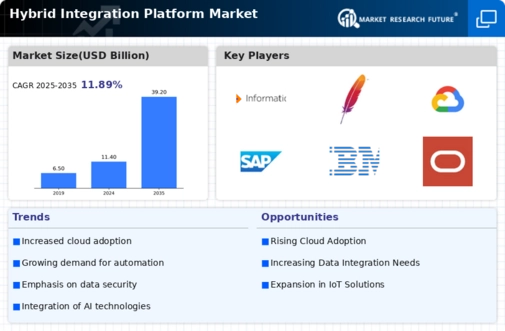
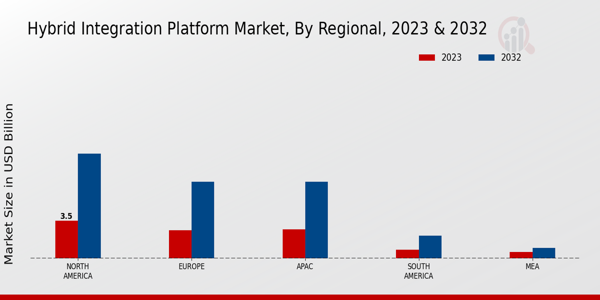


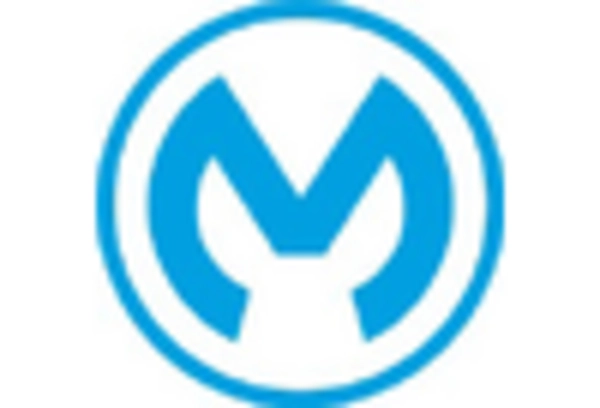

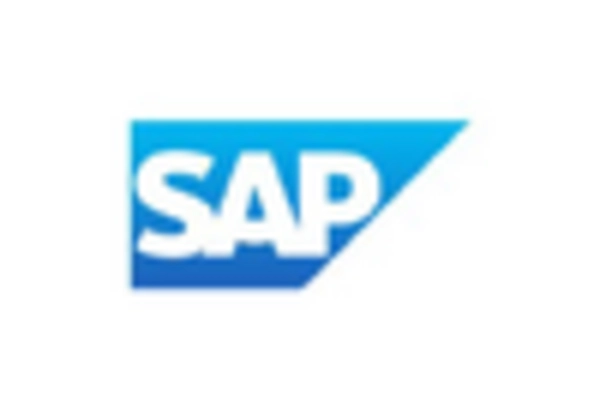
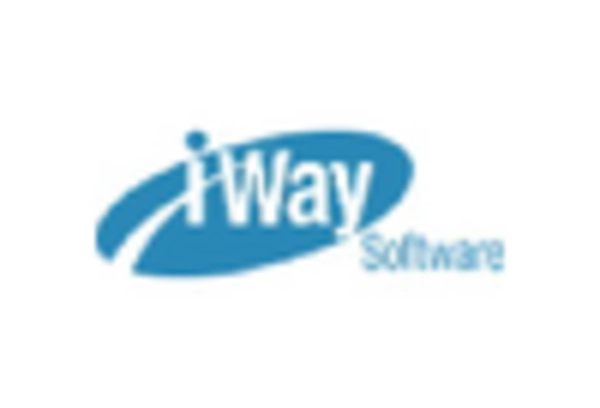

Leave a Comment